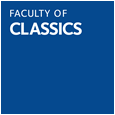This chapter takes three plant types – the shady tree, the happy crop, and the wayside flower – as starting points for an exploration of ancient attitudes towards plants as both in harmony with and divergent from human worldviews and goals. It demonstrates how the same or similar plants can represent very different moods in different settings, sometimes positively reinforcing a human view, sometimes obstructing it. The connection between the sense of a human lifespan and the longevity or brevity of plants’ lives is forged and reforged in different contexts, while very human concerns with morality and aesthetics are differently projected onto these three broad categories of plant. Ranging from the earliest Greek works to the mid-imperial period of Rome, the chapter highlights both some continuities and some differences emerging in the course of around 900 years of literary engagement with plants.
anthropocentrism
,cultivation
,death
,sexuality
,locus amoenus



